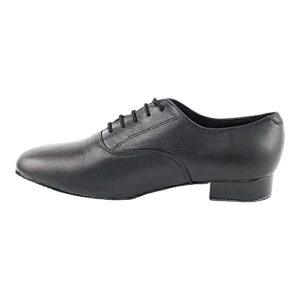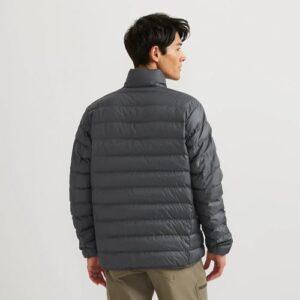Finding the perfect fit for your Boston clogs can make all the difference in comfort and style. If your clogs are too tight, they might pinch your feet and cause discomfort.
Too loose, and you risk slipping or blisters. You want your clogs to feel just right, supporting your feet all day long without any pain. You’ll discover exactly how Boston clogs should fit to keep you comfortable and confident every step you take.
Keep reading to learn the simple tips that will transform how your clogs feel from the moment you put them on.
Choosing The Right Size
Choosing the right size for Boston clogs matters a lot. The perfect fit ensures comfort and support all day. A wrong size can cause pain or blisters. Take time to find your best fit. Here are easy steps to help you choose the right size.
Measuring Your Foot Accurately
Start by measuring your foot length. Use a ruler or tape measure on a flat surface. Place your heel against a wall and measure to the tip of your longest toe. Do this for both feet. Use the larger measurement for sizing. Measure at the end of the day for accuracy. Feet swell slightly during the day.
Considering Width Variations
Boston clogs come in different widths. Some feet are wider or narrower than average. Check if the clog brand offers wide or narrow options. Wider feet need extra space to avoid tightness. Narrow feet need snugger fits to avoid slipping. Know your foot width before buying.
Trying On Different Sizes
Try on at least two sizes near your measurement. Walk around in them for a few minutes. Check for pressure points or loose areas. Your toes should move freely but not slide. Heel should stay in place without rubbing. Testing different sizes helps find your best fit.

Credit: www.asos.com
Key Features Of A Proper Fit
Finding the right fit for Boston clogs is important for comfort and foot health. Proper fitting clogs support your feet well and prevent pain. They should feel snug but not tight. Let’s explore the key features that show a proper fit.
Heel And Arch Support
Good heel support keeps your foot stable inside the clog. It stops your foot from slipping out. Arch support helps reduce foot fatigue. It supports the natural curve of your foot. Proper arch support improves balance and comfort.
Toe Box Space
The toe box must have enough room for your toes. Your toes should not feel cramped or squeezed. A roomy toe box allows natural toe movement. This helps prevent blisters and foot pain. Check that your toes can wiggle freely.
Secure Heel Grip
A secure heel grip keeps your heel in place. It prevents slipping while walking. Loose heels cause discomfort and blisters. The heel strap or back of the clog should hold your heel firmly but gently.
Common Fit Issues
Boston clogs should fit comfortably to support your feet all day. Many people face common fit issues that make wearing clogs unpleasant. These problems include tightness, slippage, and pressure points. Understanding these issues helps you find the right fit and feel better in your shoes.
Dealing With Tightness
Tight clogs can cause pain and restrict movement. Your feet might feel squeezed, especially around the toes or instep. To ease tightness, try loosening any straps or choosing a wider size. Wearing clogs with thicker socks can also make tightness worse. Always test the fit by walking to check comfort.
Addressing Slippage
Slippage happens when your heel lifts out of the clog while walking. This can cause blisters and make walking unstable. To fix slippage, adjust the heel strap if your clogs have one. Adding an insole can help your foot stay in place. Make sure the clog is not too big for your foot.
Handling Pressure Points
Pressure points cause sharp pain in certain spots of your foot. These spots often appear on the sides or top of the foot. To relieve pressure points, try cushioned inserts or thicker socks. Check for rough seams or edges inside the clog. These areas might need smoothing or padding for comfort.
Breaking In Your Boston Clogs
Breaking in your Boston clogs is important for comfort. These shoes need time to fit your feet perfectly. Wearing them too long at first can cause discomfort or blisters. Follow simple steps to make the process smooth and easy.
Tips For Gradual Use
Start by wearing your clogs for short periods. Try 1 to 2 hours daily at first. Slowly increase the time as they feel more comfortable. Avoid wearing them all day on the first few days. This helps your feet adjust without pain.
Using Socks And Inserts
Wear thin socks to reduce friction inside the clogs. Socks protect your skin and help the shoes fit better. You can use soft inserts for extra cushioning. Inserts also improve comfort during the breaking-in phase.
Recognizing When They’re Ready
Your clogs are ready when they feel snug but not tight. You should walk without pain or blisters. The shoes will form to your feet over time. At this point, you can wear them for longer periods comfortably.
Maintaining Comfort Over Time
Maintaining comfort in Boston clogs over time is key for happy feet. Proper care keeps the fit snug and the materials strong. Small habits help your clogs last longer and feel better every day.
Regular Cleaning And Care
Clean your Boston clogs often to remove dirt and sweat. Use a soft brush or cloth with mild soap and water. Avoid soaking them. Let the clogs air dry away from direct heat. This prevents damage and keeps the material soft.
Replacing Insoles
Insoles wear out faster than the clogs themselves. Replace them when they feel flat or lose support. New insoles restore cushioning and improve fit. Choose insoles made for clogs for the best comfort.
When To Replace Your Clogs
Check your clogs for cracks, worn soles, or loose parts. Replace them if they no longer support your feet well. Worn clogs can cause discomfort or pain. Change them early to protect your foot health and keep walking comfortably.

Credit: www.reddit.com

Credit: www.youtube.com
Frequently Asked Questions
How Tight Should Boston Clogs Fit?
Boston clogs should fit snugly but not tight. They must secure your feet without causing pressure or discomfort. Proper fit ensures comfort and prevents slipping during walking or standing.
Can Boston Clogs Be Too Loose?
Yes, loose Boston clogs can cause foot instability. Loose clogs increase the risk of tripping and blisters. Ensure a firm fit around your heel and midfoot for safety.
Should There Be Space At The Toe In Boston Clogs?
Yes, leave about a half-inch space at the toe. This prevents toe crowding and allows natural movement. Adequate toe space enhances comfort and reduces foot fatigue.
Are Boston Clogs Suitable For Wide Feet?
Many Boston clogs come in wide sizes. Choose wide options if you have broad feet for better comfort. Proper width prevents pinching and improves overall fit.
Conclusion
Boston clogs should fit comfortably from the start. They need space for your toes to move freely. The heel should stay secure without slipping. Avoid tightness that causes pain or blisters. A good fit helps you walk with ease. Remember, proper sizing extends the life of your clogs.
Try them on and walk around before buying. Comfort and fit go hand in hand with style. Choose the right size for happy feet every day.

Madison Clark is a footwear expert and the voice behind MyStyleGrid.com. She specializes in honest shoe reviews, style tips, and practical guides to help readers find the perfect pair for any occasion. With years of experience in blogging and content creation, Madison makes footwear knowledge simple, stylish, and easy to follow.







